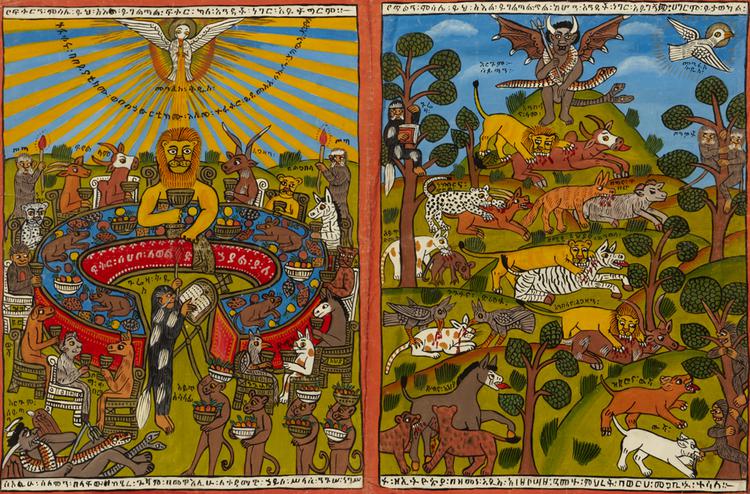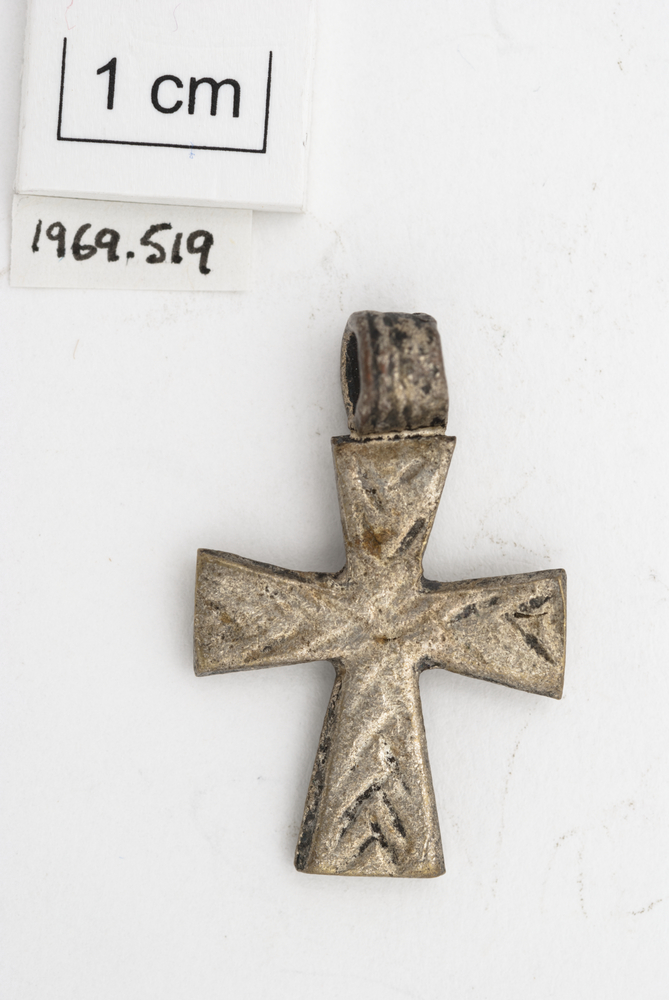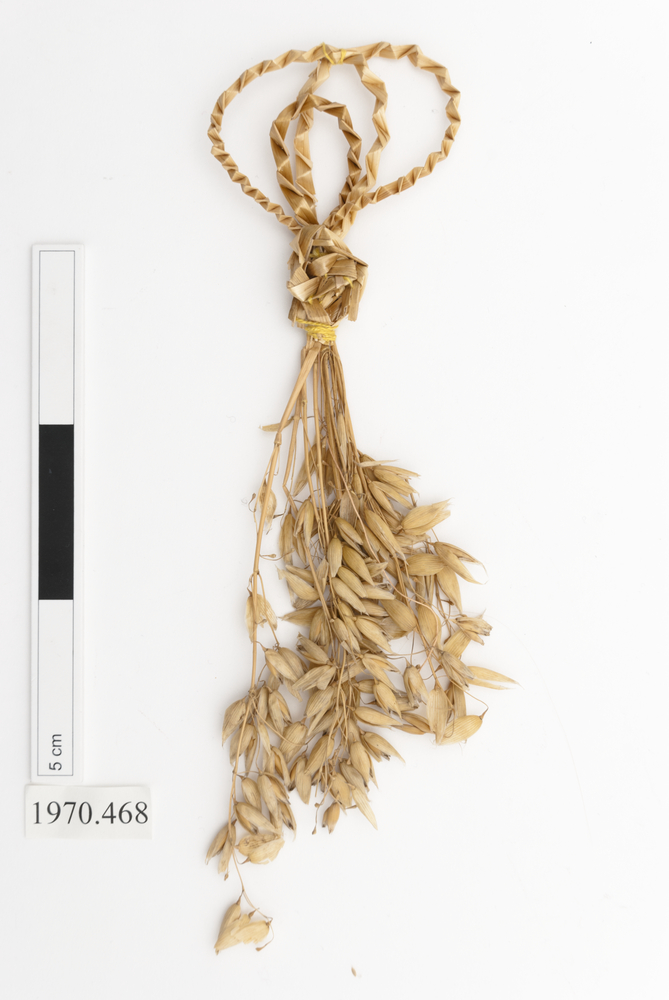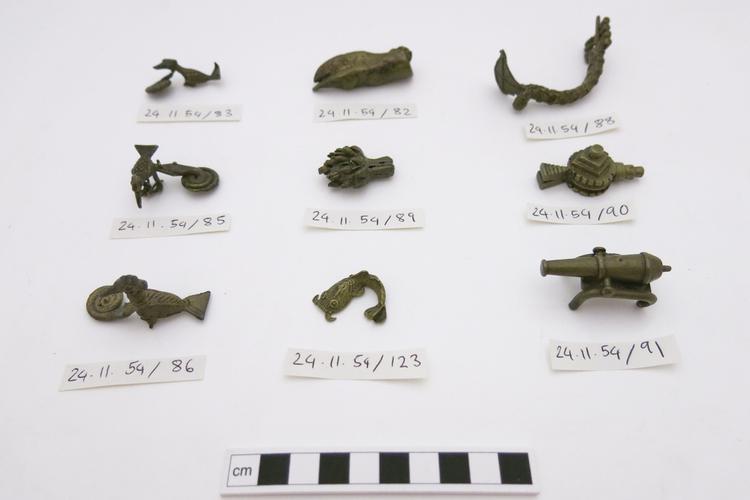
Painting on cotton depicting two scenes. On the left, the first scene depicts an animal banquet with the lion seated centrally beneath a representation of a dove or the Holy Spirit, various animals seated peacefully together sharing food and drink, a colobus monkey reading the liturgy, and in the bottom left corner the devil is overcome. On the right, the second scene depicts animals in a wilderness, eating and attacking each other under the gaze of a winged devil who is seated on a hilltop, and the Holy Spirit in the form of a dove is driven away.
The painting of the animal banquet uses animals to represent the coronation banquet of H.I.M. Emperor Haile Selassie I of Ethiopia. The Emperor is represented by the lion, king of all animals and the symbol of the Ethiopian imperial throne. The theme of the painting is to show that the coronation of the Emperor heralds a new era of peace and unity amongst all peoples. Previous grievances and animosity are washed away and enemies sit together in peace and reconciliation: the fox and the sheep, the leopard and the goat. The painting makes great reference to the gospels of the Bible and the commandment to 'love thy neighbour as thyself'. Ethiopian emperors claim descent from the biblical House of David and are considered to be chosen by God. The image of the Holy Spirit confirms the Emperor’s status as a Holy Emperor of the line of David and blesses his reign. The inscription around the table serves as a reminder to live and reign humbly, through the love of God or be destroyed by the avarices of man.





